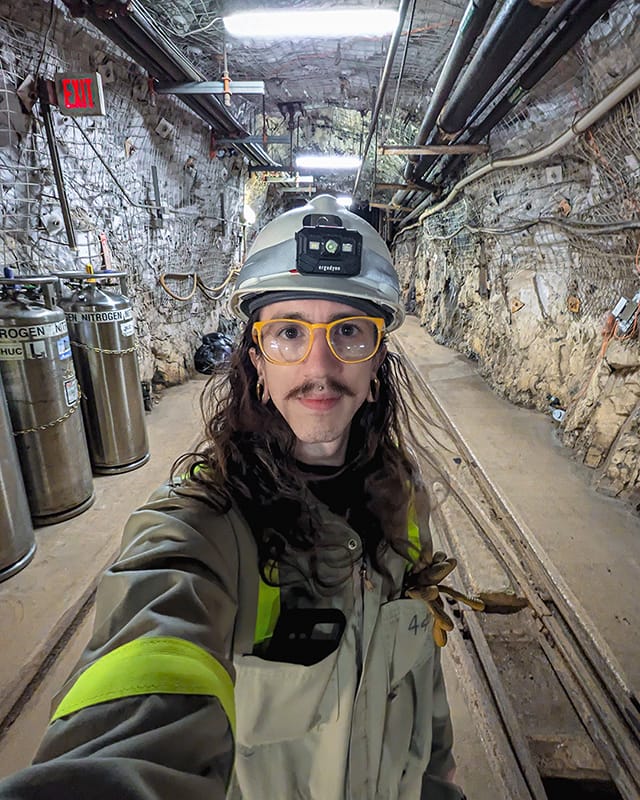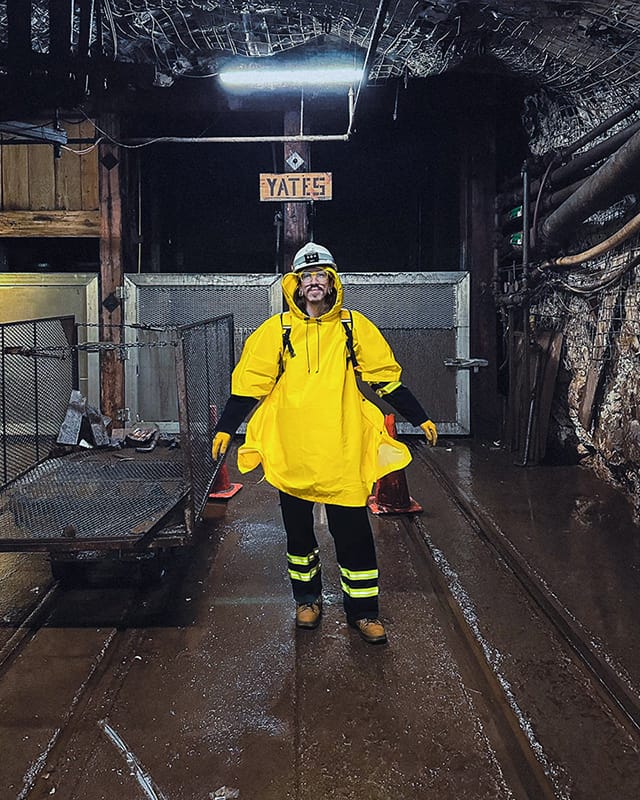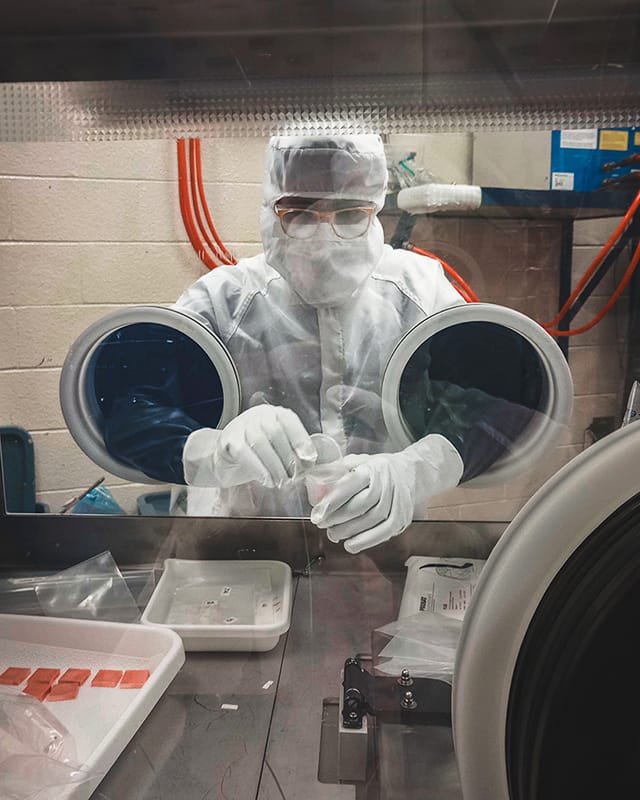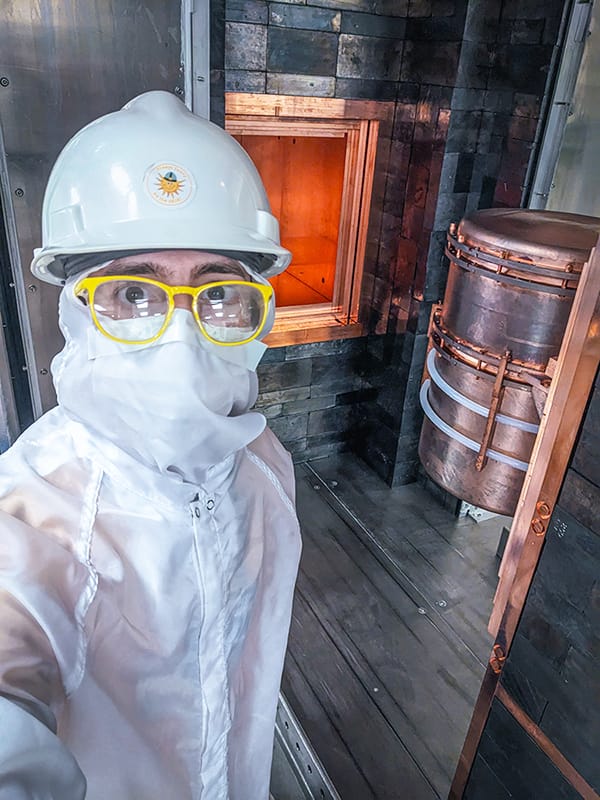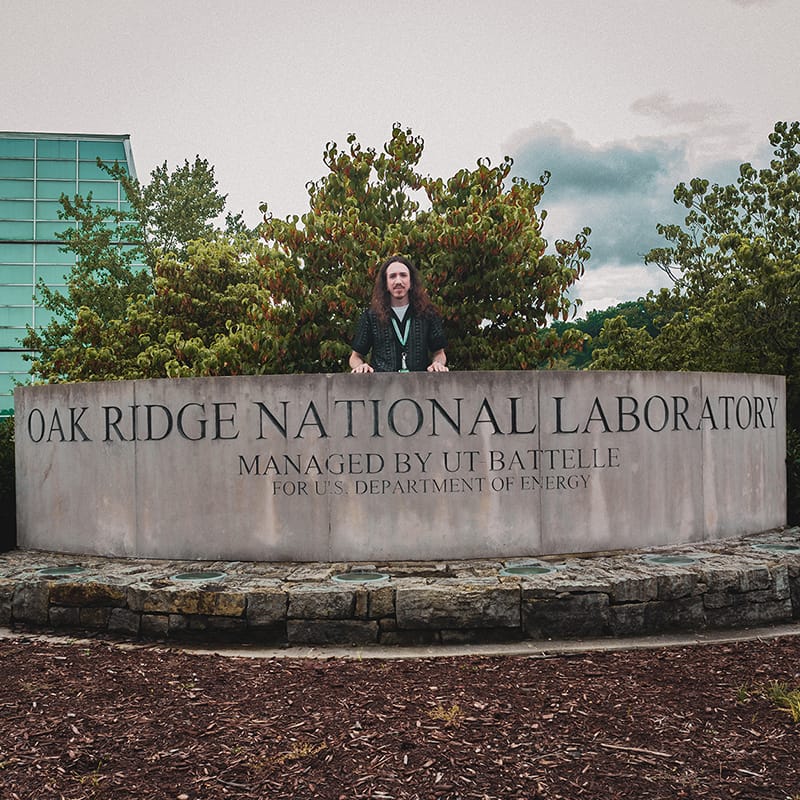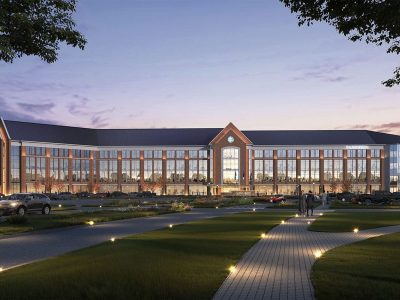RAPID CITY, S.D. (Oct. 7, 2025) – What began as a love for art and music has led South Dakota Mines senior Ryan Cantz to one of the nation’s top undergraduate honors in nuclear science.
Cantz, a physics major from New Jersey, has been selected for the Conference Experience for Undergraduates (CEU) award, a competitive national program recognizing promising young scientists in the field. The CEU, held alongside the American Physical Society’s Division of Nuclear Physics fall meeting, will take place Oct. 17–20 in Chicago.
“I was so excited; I couldn’t believe it,” Cantz said. “It is very competitive and more selective each year.”
Cantz’s path to physics was unconventional. After high school, he explored music and art before finding creative inspiration in physics textbooks. “I found that my brain, whether I am creating art or doing physics, is not that different,” he said.
He eventually chose South Dakota Mines for its affordability, musical opportunities, and strong connection to the Sanford Underground Research Facility (SURF) in Lead, where he has worked since his freshman year.
Under the mentorship of Cabot-Ann Christofferson, senior research scientist in the Department of Chemistry, Biology and Health Sciences, Cantz has contributed to a variety of nuclear science projects, from investigating rare isotopes to fabricating ultra-pure materials for sensitive detectors.
His current research focuses on the LEGEND-200 experiment, an international collaboration seeking evidence of neutrinoless double-beta decay—a process that could reshape understanding of how matter exists in the universe. Cantz’s project, “Optimizing Time-Zero in Germanium Detectors of LEGEND-200,” aims to correct timing inaccuracies in the experiment’s detectors by comparing them to silicon photomultiplier sensors.
“Knowing exactly when events occur in an experiment is critical,” Cantz explained. “You want things happening when they are actually happening; that’s what the time correction will do.”
Drawing from his artistic background, Cantz plans to turn his detector data into sound for his Chicago presentation, allowing listeners to hear the timing errors between instruments—much like musicians correcting rhythm in a song.
Following his CEU presentation, Cantz will travel with Christofferson’s research team to Italy’s Gran Sasso National Laboratory, where the LEGEND-200 experiment is housed, to continue his work alongside international scientists.
His recognition adds to South Dakota Mines’ growing reputation as a leading hub for physics and underground science research in the Black Hills and South Dakota.
